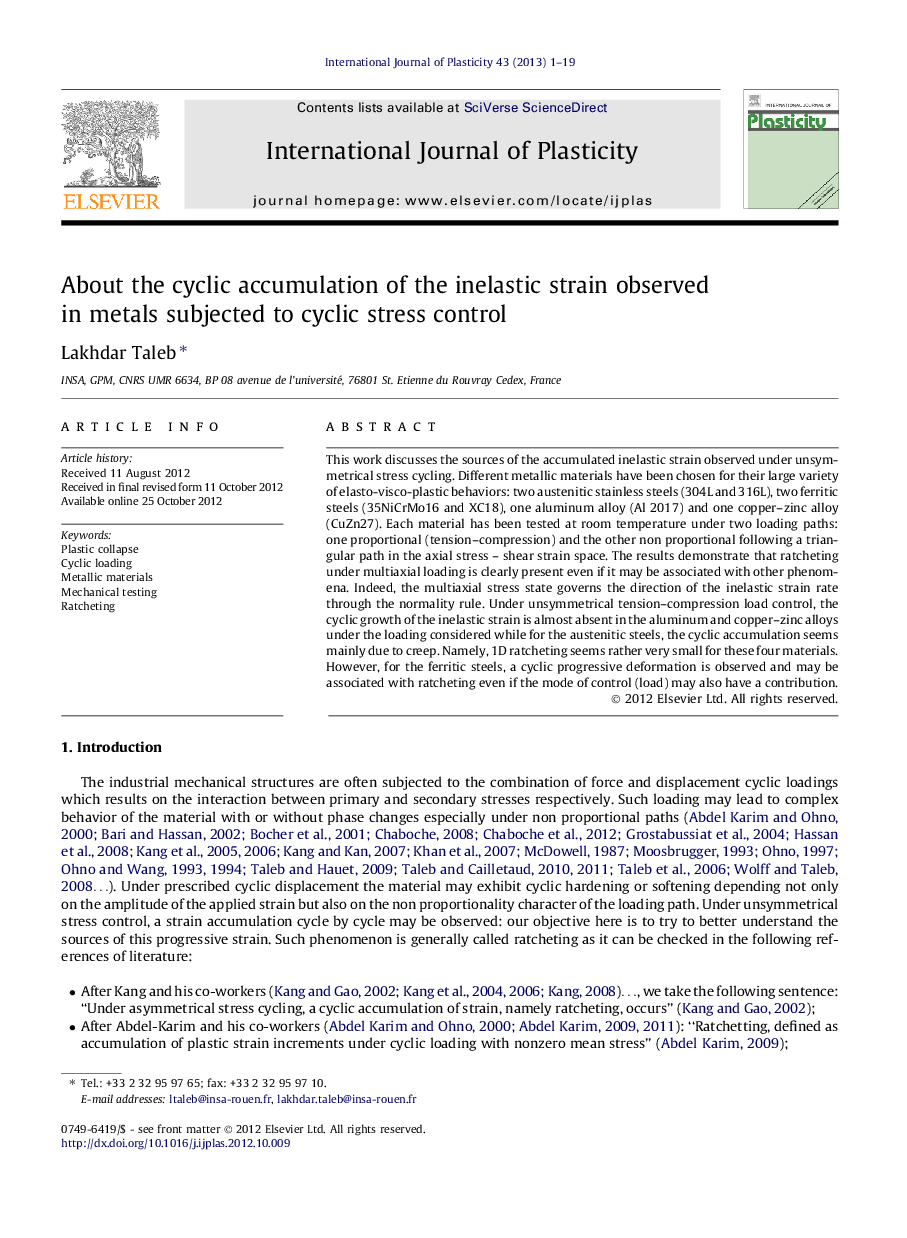| Article ID | Journal | Published Year | Pages | File Type |
|---|---|---|---|---|
| 786920 | International Journal of Plasticity | 2013 | 19 Pages |
This work discusses the sources of the accumulated inelastic strain observed under unsymmetrical stress cycling. Different metallic materials have been chosen for their large variety of elasto-visco-plastic behaviors: two austenitic stainless steels (304L and 316L), two ferritic steels (35NiCrMo16 and XC18), one aluminum alloy (Al 2017) and one copper–zinc alloy (CuZn27). Each material has been tested at room temperature under two loading paths: one proportional (tension–compression) and the other non proportional following a triangular path in the axial stress – shear strain space. The results demonstrate that ratcheting under multiaxial loading is clearly present even if it may be associated with other phenomena. Indeed, the multiaxial stress state governs the direction of the inelastic strain rate through the normality rule. Under unsymmetrical tension–compression load control, the cyclic growth of the inelastic strain is almost absent in the aluminum and copper–zinc alloys under the loading considered while for the austenitic steels, the cyclic accumulation seems mainly due to creep. Namely, 1D ratcheting seems rather very small for these four materials. However, for the ferritic steels, a cyclic progressive deformation is observed and may be associated with ratcheting even if the mode of control (load) may also have a contribution.
► Ratcheting is a rate-independent phenomenon that should not be confused with creep. ► Ratcheting is not significant in 304L and 316L SS under uniaxial loading. ► Ratcheting seems small for aluminum and copper alloys under tension–compression. ► Ratcheting is observed in ferritic steels under tension–compression. ► Ratcheting is clearly present for all considered metals under multiaxial loading.
